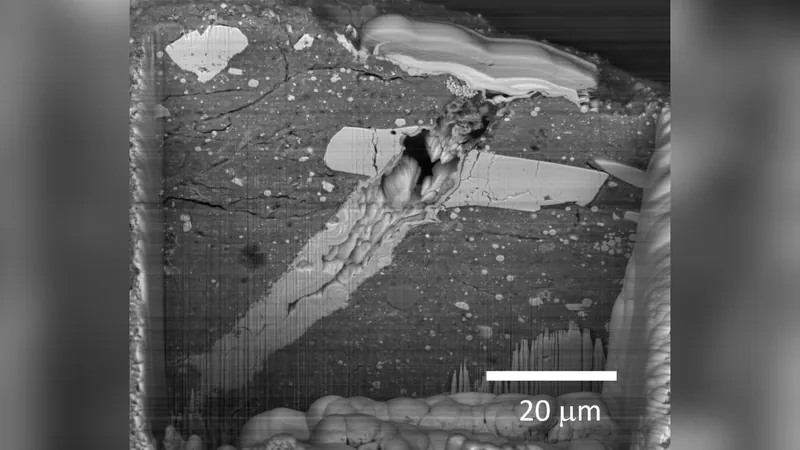
Revolutionary Diamond Sensor Poised to Transform Cancer Detection
2025-08-25
Author: Benjamin
A Breakthrough in Tumor Detection
In a groundbreaking development, researchers at the University of Warwick have unveiled an innovative diamond-based sensor that promises to revolutionize the way we detect cancer spread. This new device is being hailed as a potential "game-changer" in the fight against metastasized tumors, particularly breast cancer.
How It Works: A Closer Look
The cutting-edge sensor operates by utilizing a non-toxic and non-radioactive method to detect a magnetic tracer fluid, which is injected into patients during or prior to breast cancer surgery. This fluid, once injected, can be tracked by the diamond sensor, allowing medical professionals to accurately identify lymph nodes that need to be surgically removed to halt cancer's progression.
Impressive Sensitivity and Size
The team highlighted the sensor’s remarkable sensitivity, able to detect merely one-hundredth of a typical clinical dose of tracer fluid. First author Alex Newman, a PhD student in the Department of Physics, stated, "For our diamond-based sensor, we achieved an unprecedented miniaturization with a sensor head size of just 10 mm. This makes it uniquely suitable for endoscopic procedures and keyhole surgeries."
The Science Behind the Sensor
The secret lies in diamonds' unique ability to sense magnetic fields, specifically through what are known as nitrogen vacancy centers. According to senior author Prof. Gavin Morley, these properties are what enable the device's unprecedented functionality.
A Safer Alternative to Traditional Methods
Historically, cancer tracing has relied on radioactive substances, which many hospitals can't handle, or blue dye that can trigger allergic reactions in about 1% of patients. The new diamond sensor not only circumvents these issues but also eliminates the need for cumbersome electronic equipment, making it a more accessible option for medical institutions.
Expanding the Horizons of Cancer Detection
While the focus is on breast cancer, the researchers anticipate that this diamond sensor could have significant applications in identifying other types of cancers, including lung, liver, colorectal, and esophageal cancers, thereby broadening its impact on patient care.
A Promising Future
As the research gets published in the journal Physical Review Applied, it marks a significant leap towards a future where cancer detection could become faster, safer, and more efficient, giving hope to countless patients and their families.









 Brasil (PT)
Brasil (PT)
 Canada (EN)
Canada (EN)
 Chile (ES)
Chile (ES)
 Česko (CS)
Česko (CS)
 대한민국 (KO)
대한민국 (KO)
 España (ES)
España (ES)
 France (FR)
France (FR)
 Hong Kong (EN)
Hong Kong (EN)
 Italia (IT)
Italia (IT)
 日本 (JA)
日本 (JA)
 Magyarország (HU)
Magyarország (HU)
 Norge (NO)
Norge (NO)
 Polska (PL)
Polska (PL)
 Schweiz (DE)
Schweiz (DE)
 Singapore (EN)
Singapore (EN)
 Sverige (SV)
Sverige (SV)
 Suomi (FI)
Suomi (FI)
 Türkiye (TR)
Türkiye (TR)
 الإمارات العربية المتحدة (AR)
الإمارات العربية المتحدة (AR)